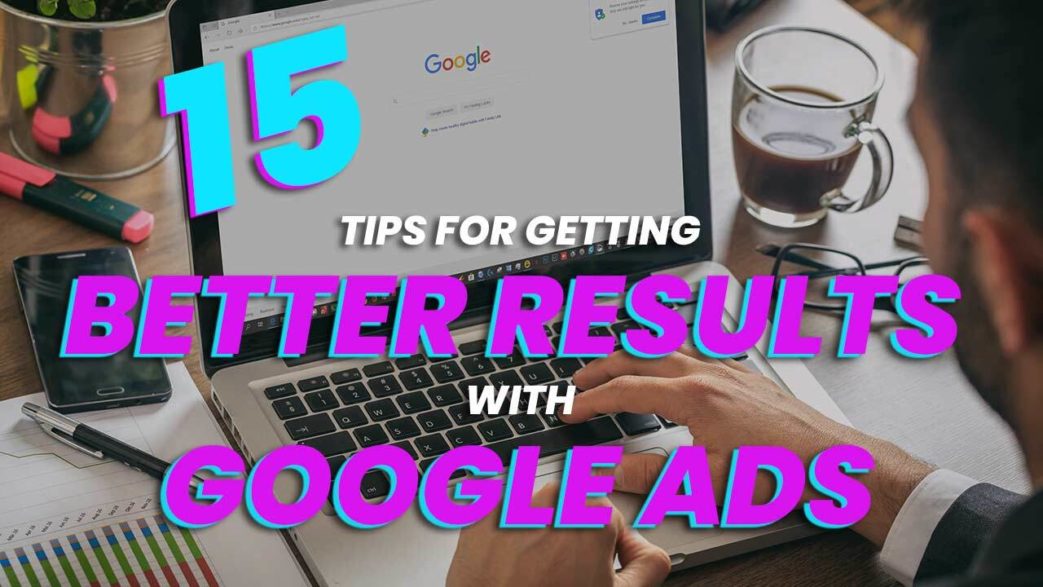Google ads give you a worldwide audience of millions to market your church to every single day. Of course, it’s not quite as easy as just putting up a quick ad.
As with anything online, certain techniques help you optimize results to make sure you’re reaching the right audience for your church. After all, you wouldn’t want to waste time showing church ads to someone looking for the best beach to vacation at.
A mix of optimization strategies can help transform your current Google Ads campaigns from just okay to driving growth to your church website and church.
Table of contents
- 1. Optimize Your Website First
- 2. Target Ads Based On Interests
- 3. Experiment With Different Times Of Day
- 4. Research Keywords Carefully
- 5. Choose The Right Page For Your Ads
- 6. Think Seasonally
- 7. Pay Close Attention To Analytics
- 8. Create More Than One Campaign
- 9. Understand Google’s Quality Score
- 10. Divide Campaigns Into Ad Groups
- 11. Use Varying Keywords For Different Groups
- 12. Consider Using Negative Keywords
- 13. Take Advantage Of Geolocation
- 14. Understand Google Ads Bidding
- 15. Partner With A Google Certified AdWords Experts
- More On Google Ads

1. Optimize Your Website First
When you think about Google ads, you probably don’t immediately think about your church website. However, before you create a single ad, you have to focus on your website. This is because your ads typically lead to your website. If it doesn’t make a great first impression, people clicking on your ads won’t stick around to learn more on your site. Plus, if people click and leave quickly, Google thinks there’s a problem, which can affect how much campaigns cost. This is part of your Google Quality Score (more on that shortly).
While SEO strategies help your site, it’s also important to focus on the overall user experience. It’s the experience, or UX, plus useful content that keeps visitors on your site. Some things that help boost the experience include:
- Make your site easy to use with clear navigation and easy to read text
- Ensure your site is mobile-friendly
- Add engaging visuals
- Provide useful, relevant content
- Blog regularly with useful content
- Ensure you have the six most important pages
Also, make sure your church website contains the content in your ads. If your ad says one thing, but visitors can’t find the same info on your website, they’ll leave.
2. Target Ads Based On Interests
You probably already know about targeting demographics, such as a particular age groups, but what about interests? Think about interests related to your church. Obviously, faith would be an interest that people would search for when looking for churches. But, consider branching out a bit.
For example, if you’re trying to recruit more volunteers, you might target interests involving non-profits, volunteering, helping others, etc. If your church has an active youth ministry, you might target parenting or youth activities. Some churches have their own community sports team, so that’s another interest you could target.
Whenever you’re trying to work toward a specific goal, such as increasing attendance to a special event, consider using interests as a way to better target your audience. This ensures your ads are only being shown to the most relevant Google search users. As such, you get better results from every ad.
3. Experiment With Different Times Of Day
Dayparting settings allow you to choose what time periods your ads show. Simply trying to show them 24/7 isn’t always the most effective strategy. If your church’s audience works a typical 9 to 5 schedule, they’re probably not searching Google at 3 AM. Instead, pick time ranges that fit your audience.
It’s also important to note that you can adjust the times based on different campaigns. In addition to time, you get to pick which days your ads show.
Thanks to detailed analytics, you can check your stats to see results for different times and days. Test out different combinations with various campaigns to see what works best for your church. There isn’t one universal combination that works for everyone, so don’t be afraid to test things for better results.
4. Research Keywords Carefully
Since Google Ads are triggered based on a combination of targeting filters and search keywords, you need to choose your keywords carefully. Simply using something generic like “church” could mean very few clicks. This is because numerous other churches could be using the same keyword. Plus, the word “church” could also apply to roads, cities/towns and even people’s names.
Instead, you want to be as specific as possible while still choosing valuable keywords people are searching for. If you’re trying to grow your church, something similar to “best churches in XYZ state or city” can work well. There are a variety of free SEO tools to help you research keywords. Google also provides the free Keyword Planner to aid you in picking better keywords.
The tool can seem overwhelming at first. Plus, unless you know what you’re looking for, it seems as if you have to invest in an ad campaign before accessing it. However, Ahrefs provides details on how to get around this along with valuable guidance on using the tool effectively.

5. Choose The Right Page For Your Ads
We touched on this briefly earlier, but it’s worth a section all its own. Always make sure the page your linking to in your ad is relevant to the ad. If you mention volunteering or online giving, but simply link to your church homepage, visitors might never reach the intended page or complete the intended action.
Make the process as straightforward as possible for anyone clicking your ads. If you’re advertising an upcoming event, create a landing page or blog post with all the details and how to register (if applicable). Many Google ads actually lead to custom landing pages just for this reason.
6. Think Seasonally
While this isn’t an Google Ads optimization strategy you can use all year, seasonal ads help you pick up more successful conversions. People often search for holiday events, especially free or low-cost events. Make sure your church’s seasonal events are showing up for searchers to notice.
Got a Christmas play or pageant coming up? Create a seasonal Google ad campaign around it. You can do the same thing if you’re hosting a Mother’s Day or Father’s Day luncheon or dinner. Even people who might not be searching for a church may still be interested in seasonal events at your church.
Leading up to seasonal events, make sure you’re using seasonal keywords, such as “Christmas,” “Easter,” “Halloween” and more.
7. Pay Close Attention To Analytics
Google provides a Google Analytics free to website owners. You can also link it to your Google Ads account to better understand how visitors are interacting with your site once they click your ad. This helps you better optimize both your ads and your church website.
In addition to just Google Analytics, you also get access to Google Ad Reports. These help you learn more about the effectiveness of keywords, return on investment, what times of day work best and so much more.
Since these tools are free, there’s no reason not to use them both to help improve your ad campaigns and even your website. If your site and ads aren’t performing as well as you’d hope, the answers could be within those two completely free tools.
8. Create More Than One Campaign
It’s a common misunderstanding that you can only run one ad campaign at a time. For some, it’s just simpler this way. However, to get the best results possible from Google Ads, it’s highly recommended to create more than one campaign at a time. At the very least, run at least two. This gives you the opportunity to target more people and achieve different goals at the same time.
Every campaign can have multiple ads within it. So, your church could have a single campaign with a few ads or two campaigns with double the ads. The latter is definitely going to reach a wider audience. Plus, if you’re using a free Google grant, this helps you spend the required $10,000 easier.
Google even makes it easy to create new campaigns by letting you copy existing ones and using them as a template. This makes getting your next campaign set up easier and faster.

9. Understand Google’s Quality Score
It’s a good idea to pay attention to your Google Quality Score. This lets you know how your church’s ad quality compares with that of other ads. A lower score can indicate your ad isn’t performing well or isn’t optimized. It’s also a sign that you’re not getting the most value possible from your ads. Typically, your cost-per-click is higher when your quality score is lower.
If you have a lower score, don’t worry. You can always improve it. While Google says the quality score isn’t a key performance indicator, it’s a key sign as to whether your ads have room for improvement or not. Plus, Google has a guide to improving your quality score to make it easier for you to better optimize your ads in the future.
10. Divide Campaigns Into Ad Groups
As we mentioned earlier, every campaign can have various ads. For best results with your church’s Google Ads, divide every campaign into ad groups. Each group targets a different demographic or audience. For example, the phrasing of an ad about volunteering might be completely different depending on different ages, online/offline volunteering and even types of volunteer opportunities.
If you’re trying to increase attendance, your ads might be divided into various groups based on various elements of your church. You might have one geared toward parents about the benefits for families, one for singles about your singles’ ministry group and another for people who’ve just moved to the area and are looking for a new church.
Different groups allow you to target different keywords to better reach more audiences. And, with more targeted ads, you get much better results.
11. Use Varying Keywords For Different Groups
Speaking of keywords, each group should have their own set of keywords. For example, the parenting demographic might include keywords or phrases that contain “family,” “parents” and “kids.” Naturally, the keywords would be different if you’re trying to get more teens or more seniors to attend.
Every ad group you create has its own keywords. Do your research for each group. The more specific the keywords, the more likely your ads are to show up for the right audience. And this leads to higher conversion rates.
12. Consider Using Negative Keywords
As weird as this sounds, negative keywords actually help your Google Ads campaigns. Just like the word “church” could also apply to towns, roads and more, negative keywords help you eliminate the overlap. You’re able to set keywords you want to exclude from campaigns. Then, if a search includes both your keyword and the negative one, the searcher doesn’t see your ad since it’s not relevant to them.
Choose your negative keywords with care. Using too many could reduce your reach. When used correctly, you optimize your ads though to reach users who’d be the most interested. Google provides an overview of how to use negative keywords. For a more in-depth explanation, HubSpot’s The Plain English Guide To Negative Keywords is incredibly useful.

13. Take Advantage Of Geolocation
For local churches, one of the best Google Ads strategies is to take advantage of geolocation. If you’re trying to increase new members in your local church (not online), targeting users worldwide isn’t going to be helpful. Instead, you’d want to restrict your ads to only show from searchers in a set area.
While Google doesn’t always get a user’s location correct, it’s generally close. Ideally, leave your search open to surrounding cities or counties. Some churches, especially those with multiple locations, target an entire state or region of a state.
14. Understand Google Ads Bidding
Google Ads run on a bidding system. This is why costs vary for different keywords and ad placements. You can go with manual or automated bidding based on your goals. When bidding, you can choose to focus on clicks, impressions, conversions or views. Then, when ad space is available, you’re entered into the auction.
To better optimize ad placement, take a look at Google’s recommendations for creating an ad bidding strategy. The guide details various options, how they work and when to use them. You can also check out the guide to bidding basics for a brief overview.
15. Partner With A Google Certified AdWords Experts
If all this sounds complicated, there is another way to get better results from Google Ads. Work with a certified expert. Experts keep track of the latest strategies and trends to optimize strategies and help your church reach your desired audience. It’s a small investment to get a far better return on your ads.
More On Google Ads
Have a Google grant, but aren’t sure how to get the most from your ad allowance? See how Reach Right Studios’ Google Grant Management service helps you with an team of certified experts





Comments 4
i need help i am new
Yes, what specific help do you need?
i need info
Great post on the significance of bidding strategies in digital marketing! I’ve discovered that regularly monitoring and fine-tuning bid strategies not only enhances ad placement but also boosts overall campaign results. Utilizing automated bidding tools has proven to be effective in optimizing ad spend and increasing ROI. I’ve covered the impact of advanced bidding techniques on ad campaigns in detail on my blog. Feel free to visit for more insights and practical advice.
for more click here or visit our website
https://nexxadigital.com/what-is-bidding-in-digital-marketing/